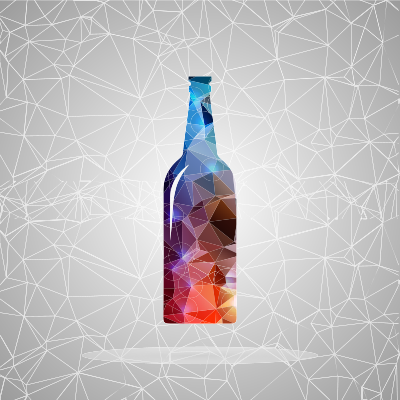Over the past several years, sour beers have been everything but a secret. The bright, tangy brews have really taken center-stage, becoming a pleasant go-to for a lot of folks’ summer option. The reality, though, is that ‘sour’ is about as broad of brushstroke as you could paint. Sours are a huge family of beers and brewing techniques, both ancient and cutting edge, depending on which sour you choose. From old-world gently-tart lambics to today’s “everything-can-be-sour”, we’re going to give you the lowdown on the wonderful world of sour beer.

But first -- a primer. Despite the recent popularity, the idea of sour beer is nothing new. In fact, before the advent of refrigeration, most beer was sour in some way or another. In the mid 19th century, very little was actually known about the fermentation process. It was mysterious, and even less was known about general sanitation. As a result of this (relatively harmless) ignorance, naturally-occurring bacteria and yeast would often pop up in breweries, and in the brews themselves. These wild bacteria would create the sour flavor we’ve come to love in recent years. Now, though, sour beers are made a little less incidentally.
In beer brewing, yeast is added to ferment sugar into alcohol. You probably know this. The type of yeast, though, can greatly impact the flavor of your finished beer. Change the type of yeast, get a different type of beer. There are certain yeasts that can create the sour flavor in beers, and that’s how brewers make it happen today.
And now, with all of that said -- onto the good part.
Lambic Beers
Lambics are basically the granddaddy of all beers. They’re how beer was first discovered, predating any type of knowledge about fermentation, yeast strains, or microscopic anything whatsoever. You could say lambics were sour before sour was cool. Very few breweries in the world create true lambics today -- in the USA, regulatory bodies would have an absolute field day with the processes involved. In the Senne Valley near Brussels, however, a handful of breweries are upholding the time-honored tradition. These breweries are notorious for not even disturbing the cobwebs or dust in their facilities, for fear of affecting their final product.
Although the most popular, readily available lambics today aren’t ultra traditional, they make mighty fine additions to a summer beer list. Most famously, Lindemann’s makes a variety of fruit-forward lambics. The fruit does well to temper the traditional lambic tartness, creating a tasty, not-too-sweet brew.
Flanders Red Ale
Sometimes called a Flemish Red-Brown, this sour beer was born in the West Flanders province of Belgium, in the year 1821. A specialty malt is responsible for the beer’s characteristic red color. The acidic, sour flavor of the Flanders Red Ale actually comes from a barrel-aging process, instead of anything happening during the brewing process. The Flanders Red Ale is aged in barrels that are inoculated with Lactobacillus, a type of bacteria used to create sour beers. This aged beer is then blended with a younger product to create a perfectly balanced, harmonious brew. Many people would compare the flavor of a Flanders Red Ale to a rich wine, laced with flavors of dark fruit and raisins.
Chicago’s Moody Tongue brewery produces a particularly exceptional Flanders Red Ale, rich with rhubarb, cherry, and oak flavors. It’s a summer-friendly beer, but also holds up well in the cooler months when paired with a hearty meal.
Oud Bruin
The Oud Bruin style is similar to the Flanders Red Ale, and is even produced in the same area in Belgium. For an Oud Bruin beer, brown ale is made and then aged in oak barrels for up to two years. During these two years, lactic acid develops, giving the beer its characteristic sour flavor. The sourness is often more subtle than a lambic or a gose, because the aged brew is typically blended with much younger, less acidic beer. In an oud bruin style, fruit forward compounds blend with a heavy maltiness, creating a uniquely balanced flavor profile.
Although decidedly a specialty beer, the oud bruin is not hard to find today. Vander Ghinste in Belgium makes an extremely delicious, extremely authentic oud bruin. Hardly sour at all, the noticeable thing about this brew is its keen sense of balance.
Gose
The gose seems to be the hottest thing out when it comes to sour beers. By definition, a gose is a German-style unfiltered sour wheat beer, with both coriander and sea salt added. This creates a balance of lemon-sour notes, and earthy-herbaceous flavors. The gose can be kettle-soured during production, or soured in barrels over the course of 1-2 years. Typically, most mass-produced goses are going to be kettle-soured, as it is a much less expensive method.
Within these general frameworks, there are seemingly endless variations and riffs that can be put on the style. Westbrook brewing in South Carolina is often credited with the revitalization of the style in America. With their flagship gose, and subsequent Key Lime Gose, Westbrook has really breathed new life into the once-extinct genre of beer.
Berliner Weisse
The Berliner weisse is quite similar to the gose -- it’s also a german wheat beer, with a characteristic sourness. The coriander and salt addition to the gose is essentially the only difference between the two styles, in fact. A finished Berliner weisse is decidedly low in alcohol, typically only 3-4%. They usually carry a mildly tart flavor profile with a rather dry finish. To play off this dry finish, fruit syrups are sometimes served with Berliner weisse beers.
And just like the gose, there’s no shortage of Berliner weisse styles on the market today. If we had to hold up one as our personal favorite though, we’d point towards Noon Whistle Brewing’s Face Smack. It’s an example of truth in advertising -- the beer hits you with a loud and proud jolt of sour. We’d put this one in the ‘love it or hate it’ category, in all honesty...but for us, it’s all love.



Comments